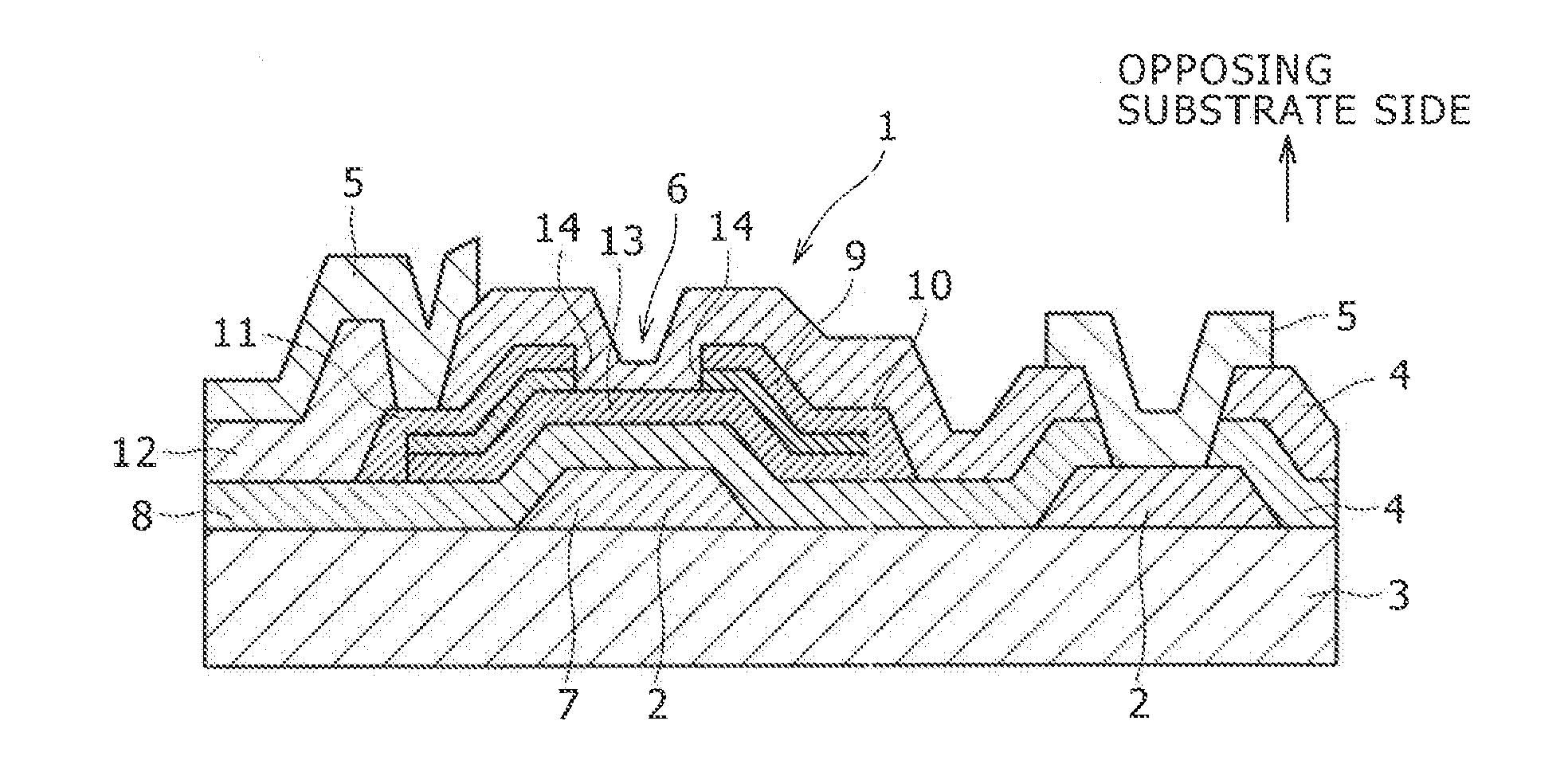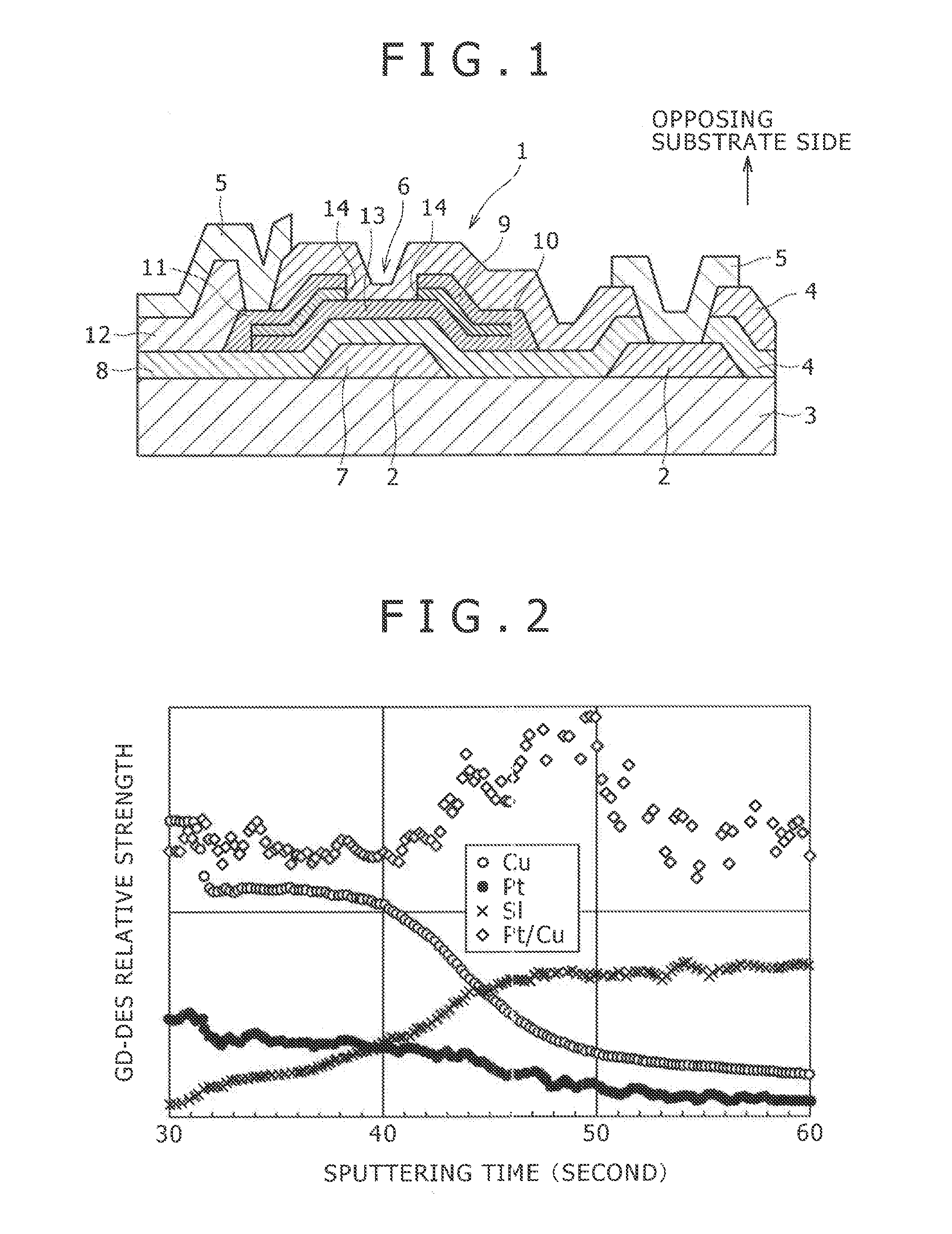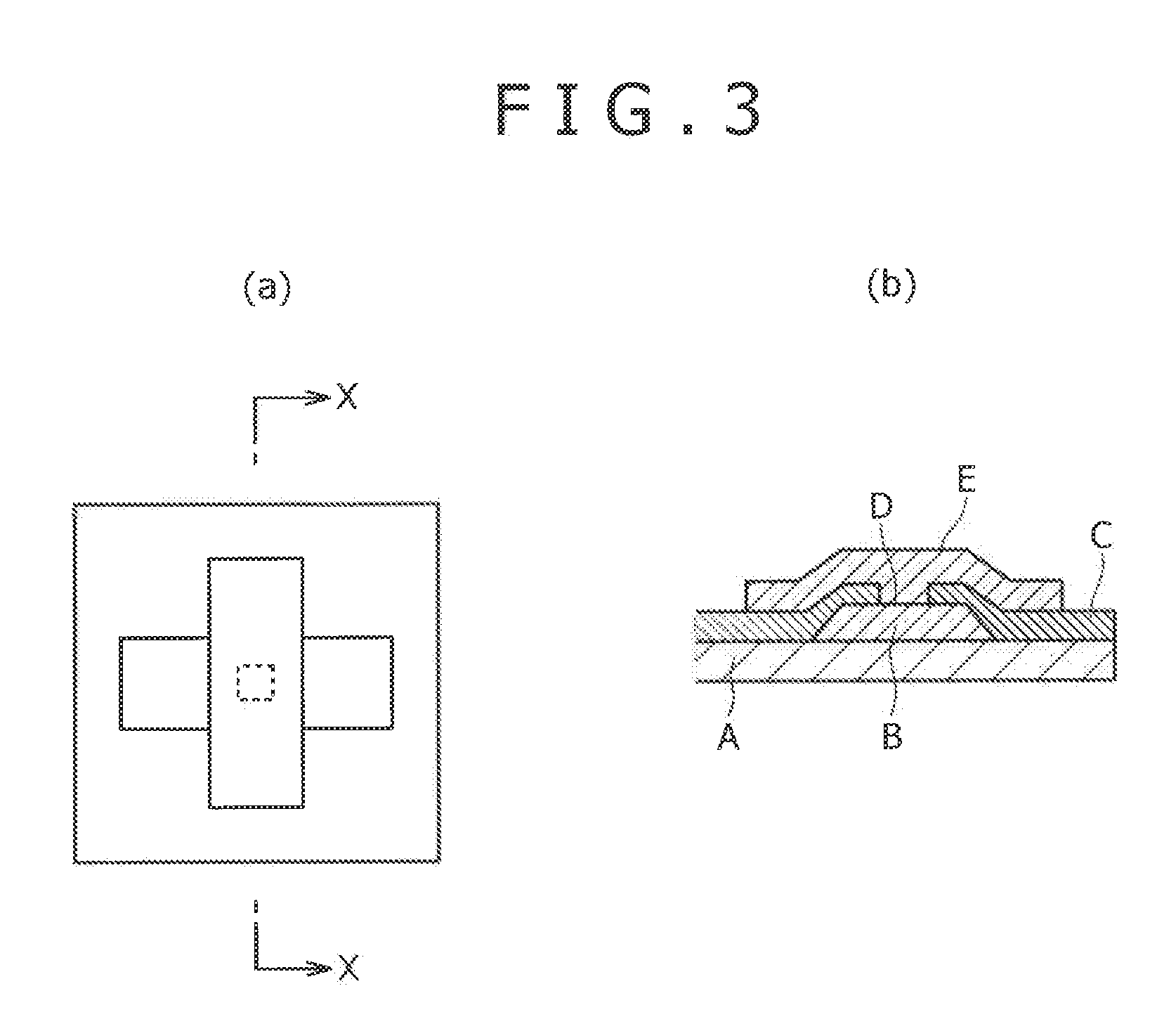Cu alloy wiring film, TFT element for flat-panel display using the cu alloy wiring film, and cu alloy sputtering target for depositing the cu alloy wiring film
- Summary
- Abstract
- Description
- Claims
- Application Information
AI Technical Summary
Benefits of technology
Problems solved by technology
Method used
Image
Examples
examples
[Peel off Rate Measurement Test]
[0075]In order to evaluate the adhesiveness of a wiring film on a glass substrate, firstly the peel test of a wiring film is carried out with an adhesive tape as shown below.
[0076]In the test, a glass substrate #1737, 0.7 mm in thickness, made by Corning Incorporated is used. As the wiring film, a Cu thin film 300 nm in thickness is vapor-deposited at room temperature (25° C.) by the DC magnetron sputtering method. The Cu thin film is deposited with a sputtering target of a pure Cu on which a chip of an additional metal element is mounted. Slits are formed on the surface of a formed wiring film with a cutter knife so as to form a grid at intervals of 1 mm. Successively, an adhesive tape is put on the thin film and peeled off at a stroke while the peeling off angle of the adhesive tape is kept at 60 degrees, the number of the segments peeled off by the adhesive tape in the grid is counted, and the ratio of the number to the total number of the segment ...
PUM
| Property | Measurement | Unit |
|---|---|---|
| Percent by atom | aaaaa | aaaaa |
| Temperature | aaaaa | aaaaa |
| Contact resistance | aaaaa | aaaaa |
Abstract
Description
Claims
Application Information
 Login to View More
Login to View More - Generate Ideas
- Intellectual Property
- Life Sciences
- Materials
- Tech Scout
- Unparalleled Data Quality
- Higher Quality Content
- 60% Fewer Hallucinations
Browse by: Latest US Patents, China's latest patents, Technical Efficacy Thesaurus, Application Domain, Technology Topic, Popular Technical Reports.
© 2025 PatSnap. All rights reserved.Legal|Privacy policy|Modern Slavery Act Transparency Statement|Sitemap|About US| Contact US: help@patsnap.com



